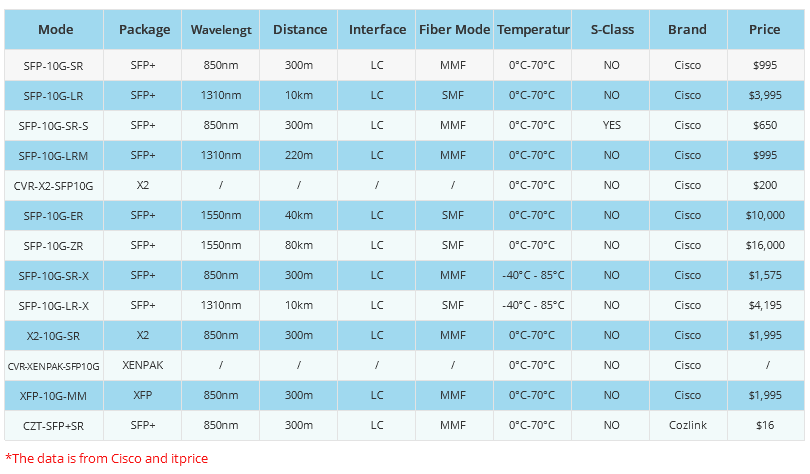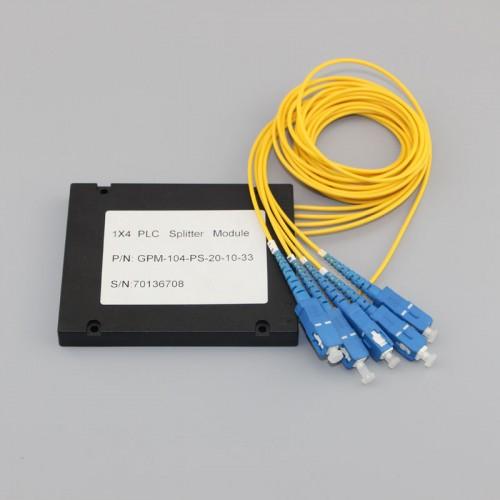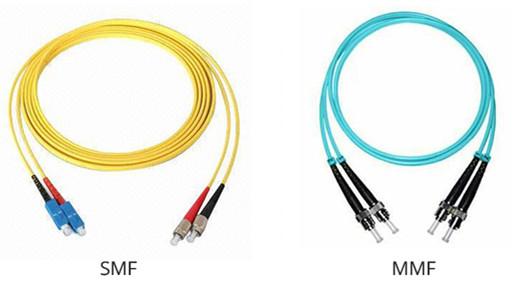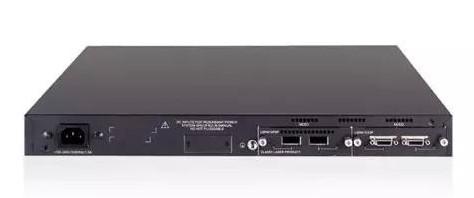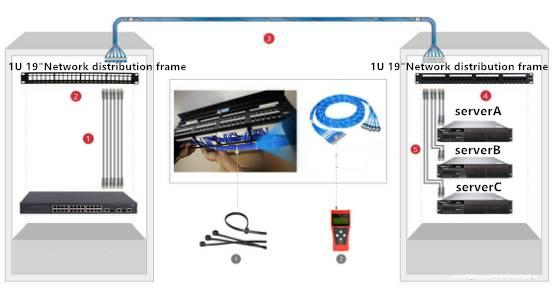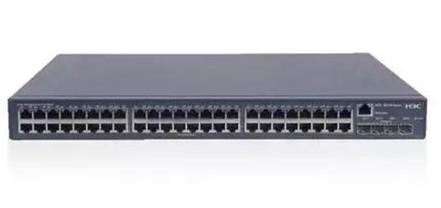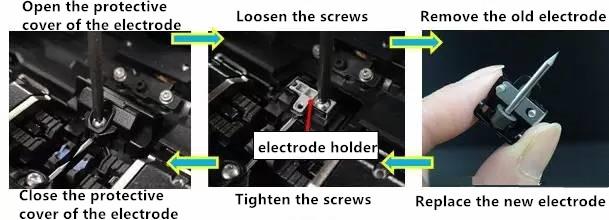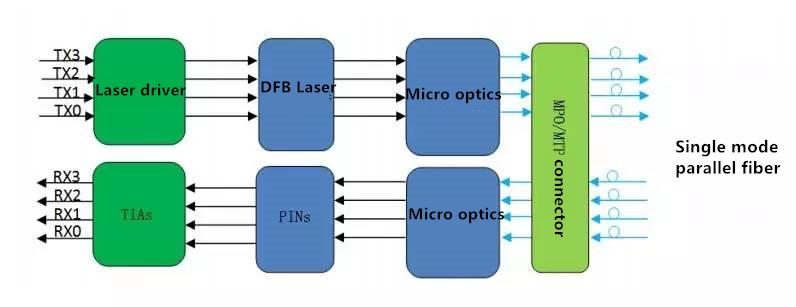- Related articles
- What can PCI-E 3.0 bring us?
- Optical Transceivers for Cisco SG550XG-24F-K9-UK Switch
- Optical Transceivers for Cisco WS-C3650-48TQ-S Switch
- Optical Transceivers for Cisco SG350XG-24T-K9-EU Switch
- All Cisco DWDM-XFP-48.51's information (List price, Specs, Datasheet PDF, Compatibility ma
- Optical Transceivers for Cisco SG350XG-24F-K9-UK Switch
- Optical Transceivers for Cisco SG250-26-K9-EU Switch
- Optical Transceivers for Cisco N3K-C3048-FA-L3 Switch
- Optical Transceivers for Cisco SG350XG-48T-K9-EU Switch
- What is 10Gb Network Card?
Recommend tag
How to choose 40G QSFP+optical module?
2024-10-31
The 40G QSFP+optical module refers to a transmission rate of 40G, and the packaging of the 40G optical module is QSFP+. The 40G optical module has four independent full duplex transceiver channels, each with a transceiver rate of 10G, forming the 40G transmission rate. SEESUO Communication will now introduce the types of 40G QSFP+optical modules.
IEEE has developed various transmission protocols for 40G QSFP+optical modules, including 40G BASE-SR4, 40G BASE-LR4, 40G BASE-BiDi, 40G BASE-ER4, etc. These optical modules have different interface types, transmission distances, and operating wavelengths. The following is a parameter list for 40G optical modules for your reference.

As shown in the table above, 40G SR4, 40G eSR4, and 40G BIDI are multi-mode optical modules that require the use of OM3/OM4 fiber jumpers for transmission. Due to their short transmission distance, they are suitable for interconnecting equipment within data centers; The interface types of 40G SR4, 40G eSR4, and 40G PSM4 are all MPO interfaces. This type of interface can not only connect 40G links, but also use MPO-LC jumpers to connect 40G links to 10G links; The interface type of LX4, LR4, and ER4 is LC, which requires the use of single-mode fiber OS2 jumper. The transmission distance is over 2KM, with a maximum distance of 40KM.
The 40GBASE-SR4 optical module uses MPO connectors and operates at a multimode wavelength of 850nm. When used together with OM3 multimode fiber, the transmission distance is 100m, and when used with OM4 multimode fiber, the transmission distance is 150m, mainly used to achieve short distance connections between network equipment in data centers. The 40GBASE-SR4 optical module can not only connect two 40G network devices using MPO fiber jumpers, but also connect 40G network devices and 10G network devices using MPO-LC fiber branch jumpers.
The 40GBASE-LR4 optical module uses duplex LC connectors with working wavelengths of 1271nm, 1291nm, 1311nm, and 1331nm. It can transmit up to 10km with single-mode fiber and is mainly used to achieve medium to long distance connections between data center network equipment.
Factors to consider when choosing 40G QSFP+optical module
However, if a 40GbE network is deployed on an existing 10GbE infrastructure, the first two types of 40G QSFP+optical modules are not applicable. In this case, choosing a 40G BiDi QSFP+optical module is more suitable, as it can support OM4 multimode duplex LC wiring up to 150 meters in length.
The 40G QSFP+optical module is a product developed based on QSFP, specifically designed for high-density applications. Compared to traditional SFP+optical modules, it has higher port density and lower overall system cost. The 40G QSFP+optical module supports simultaneous transmission of 4 10Gbps channels, providing a transmission rate of 40Gbps, which can be used in applications such as data centers, high-performance computing networks, and enterprise core networks. The 40G QSFP+optical module complies with various specifications such as SCSI, 40G Ethernet, 20G/40G Infiniband, etc. It has four data transmission channels, each with a transmission rate of about 10Gbps. When transmitted together, the four channels can achieve a transmission rate of 40Gbps. This type of optical module mainly has two interfaces: LC and MTP/MPO, which are used for single-mode and multi-mode respectively.
IEEE has developed various transmission protocols for 40G QSFP+optical modules, including 40G BASE-SR4, 40G BASE-LR4, 40G BASE-BiDi, 40G BASE-ER4, etc. These optical modules have different interface types, transmission distances, and operating wavelengths. The following is a parameter list for 40G optical modules for your reference.

| Type | Speed | Encapsulation | Wavelength(nm) | Distance | interface type | Jumper matching |
| SEESUO-40g-QSFP-1 | 40G | QSFP+ | 850 | 150m | MPO | OM4 |
| SEESUO-40g-QSFP-2 | 40G | QSFP+ | 850&900 | 150m | LC | OM4 |
| SEESUO-40g-QSFP-3 | 40G | QSFP+ | 850 | 400m | MPO | OM4 |
| SEESUO-40g-QSFP-4 | 40G | QSFP+ | 1310 | 2km | MPO | OS2 |
| SEESUO-40g-QSFP-5 | 40G | QSFP+ | CWDM | 10km | 双LC | OS2 |
| SEESUO-40g-QSFP-6 | 40G | QSFP+ | CWDM | 40km | 双LC | OS2 |
As shown in the table above, 40G SR4, 40G eSR4, and 40G BIDI are multi-mode optical modules that require the use of OM3/OM4 fiber jumpers for transmission. Due to their short transmission distance, they are suitable for interconnecting equipment within data centers; The interface types of 40G SR4, 40G eSR4, and 40G PSM4 are all MPO interfaces. This type of interface can not only connect 40G links, but also use MPO-LC jumpers to connect 40G links to 10G links; The interface type of LX4, LR4, and ER4 is LC, which requires the use of single-mode fiber OS2 jumper. The transmission distance is over 2KM, with a maximum distance of 40KM.
The 40GBASE-SR4 optical module uses MPO connectors and operates at a multimode wavelength of 850nm. When used together with OM3 multimode fiber, the transmission distance is 100m, and when used with OM4 multimode fiber, the transmission distance is 150m, mainly used to achieve short distance connections between network equipment in data centers. The 40GBASE-SR4 optical module can not only connect two 40G network devices using MPO fiber jumpers, but also connect 40G network devices and 10G network devices using MPO-LC fiber branch jumpers.
The 40GBASE-LR4 optical module uses duplex LC connectors with working wavelengths of 1271nm, 1291nm, 1311nm, and 1331nm. It can transmit up to 10km with single-mode fiber and is mainly used to achieve medium to long distance connections between data center network equipment.
Factors to consider when choosing 40G QSFP+optical module
1. Transmission distance
The maximum transmission distance of different QSFP+optical modules varies. Generally speaking, the 40G-SR4 QSFP+optical module can support transmission of OM3 multimode fiber up to 300 meters and OM4 multimode fiber up to 400 meters. That is to say, if the expected transmission distance of the project is less than 400 meters, 40G-SR4 QSFP+optical modules can be used together with OM4 optical cables.2. Interface type
The 40GBASE-SR4 QSFP+optical module and the 40GBASE-CSR4 QSFP+optical module both use MTP interfaces and are used with MTP/MPO fiber jumpers, but have different transmission distances. In contrast, the 40GBASE-SR BiDi QSFP+optical module uses duplex LC interfaces and is used with LC multimode fiber jumpers.3. Wiring scheme
Usually, optical modules used for 40GbE networks adopt parallel technology, which uses multiple 10Gbps lasers to transmit on multiple fiber bundles simultaneously to achieve high data rates (4 × 10Gbps). Therefore, 40G optical devices use MPO or MTP wiring instead of traditional duplex LC wiring. 40GBASE-SR4 and 40GBASE-CSR4, two 40G multi-mode QSFP+optical modules with MPO/MTP interfaces, are more suitable.However, if a 40GbE network is deployed on an existing 10GbE infrastructure, the first two types of 40G QSFP+optical modules are not applicable. In this case, choosing a 40G BiDi QSFP+optical module is more suitable, as it can support OM4 multimode duplex LC wiring up to 150 meters in length.
4. Other factors
In addition to considering the transmission distance, interface type, and wiring scheme, other factors such as compatibility, receiver sensitivity, and temperature are also very important. Before choosing a 40G QSFP+optical module, users should have an appropriate plan and fully consider all aspects to select the most suitable 40G QSFP+optical module.The 40G QSFP+optical module is a product developed based on QSFP, specifically designed for high-density applications. Compared to traditional SFP+optical modules, it has higher port density and lower overall system cost. The 40G QSFP+optical module supports simultaneous transmission of 4 10Gbps channels, providing a transmission rate of 40Gbps, which can be used in applications such as data centers, high-performance computing networks, and enterprise core networks. The 40G QSFP+optical module complies with various specifications such as SCSI, 40G Ethernet, 20G/40G Infiniband, etc. It has four data transmission channels, each with a transmission rate of about 10Gbps. When transmitted together, the four channels can achieve a transmission rate of 40Gbps. This type of optical module mainly has two interfaces: LC and MTP/MPO, which are used for single-mode and multi-mode respectively.

TECHNICAL SUPPORT
Get solutions or consultation from the technical team.




























































